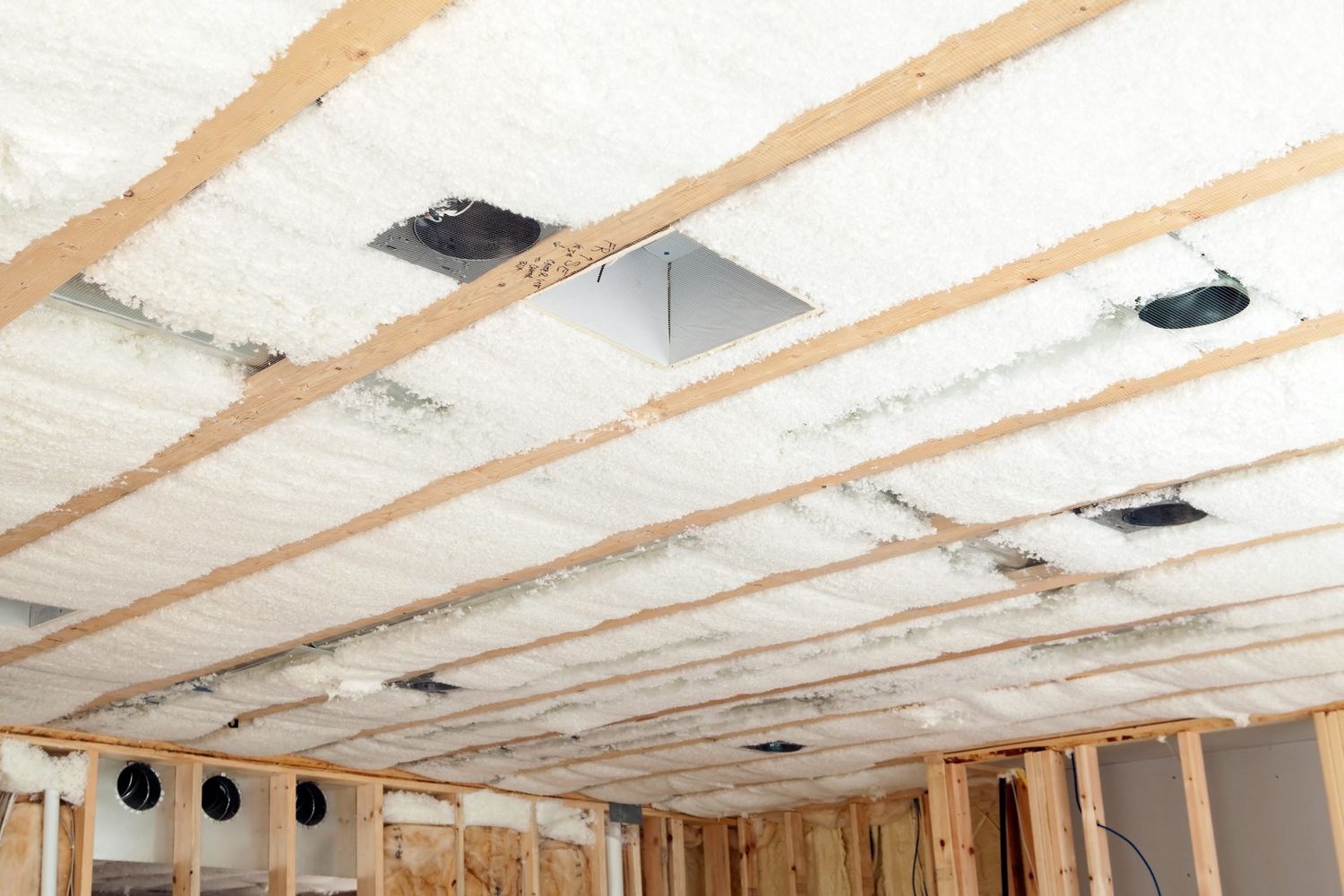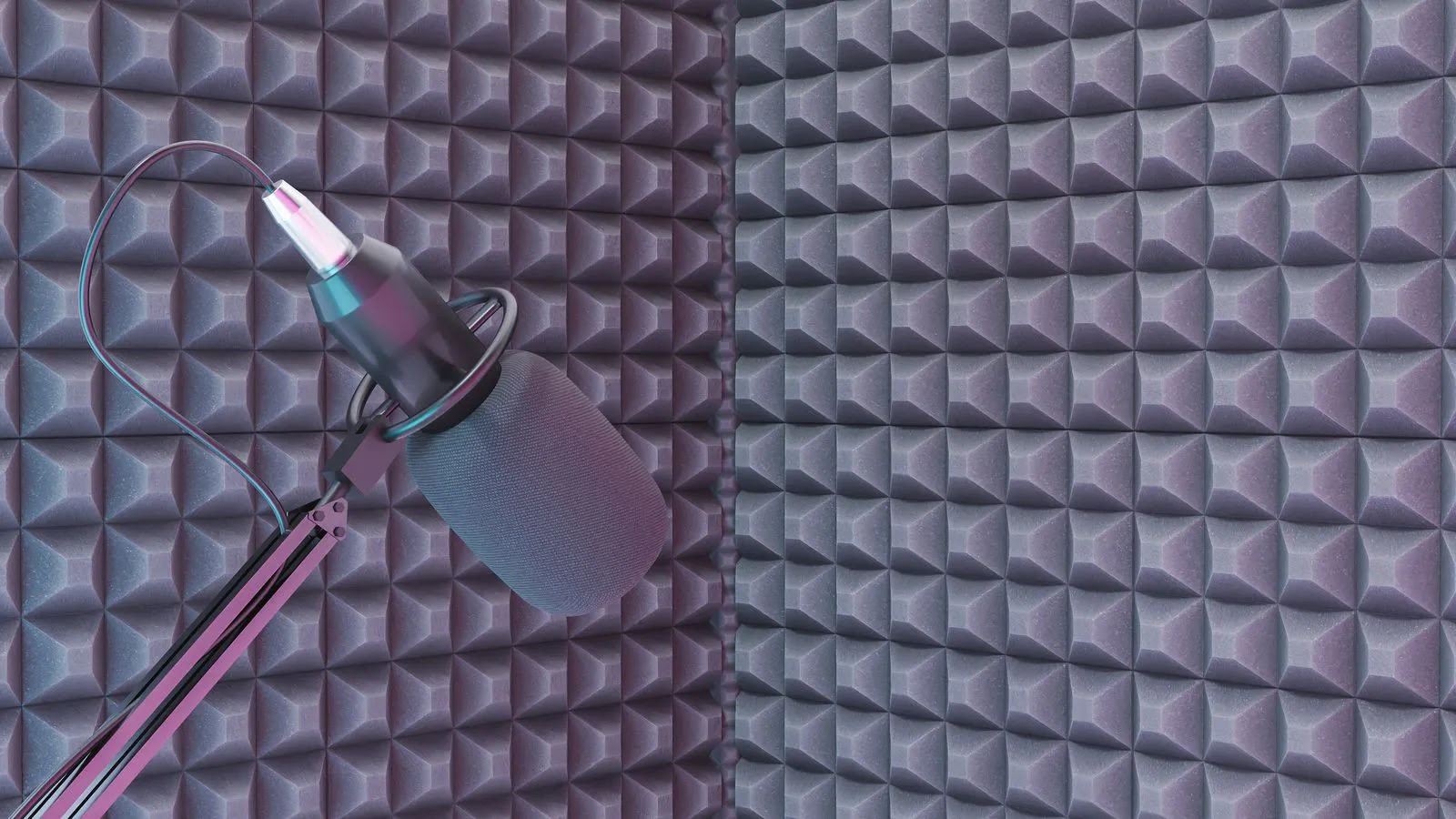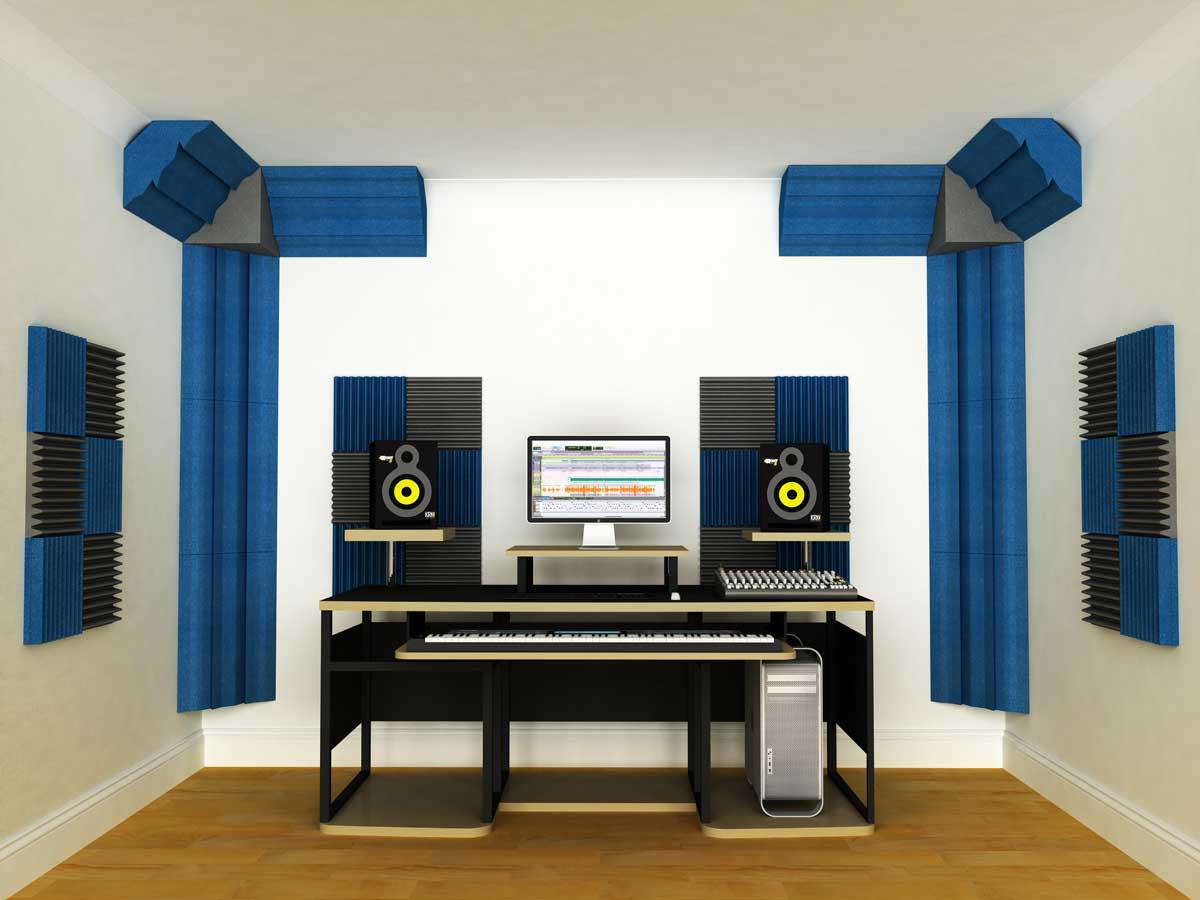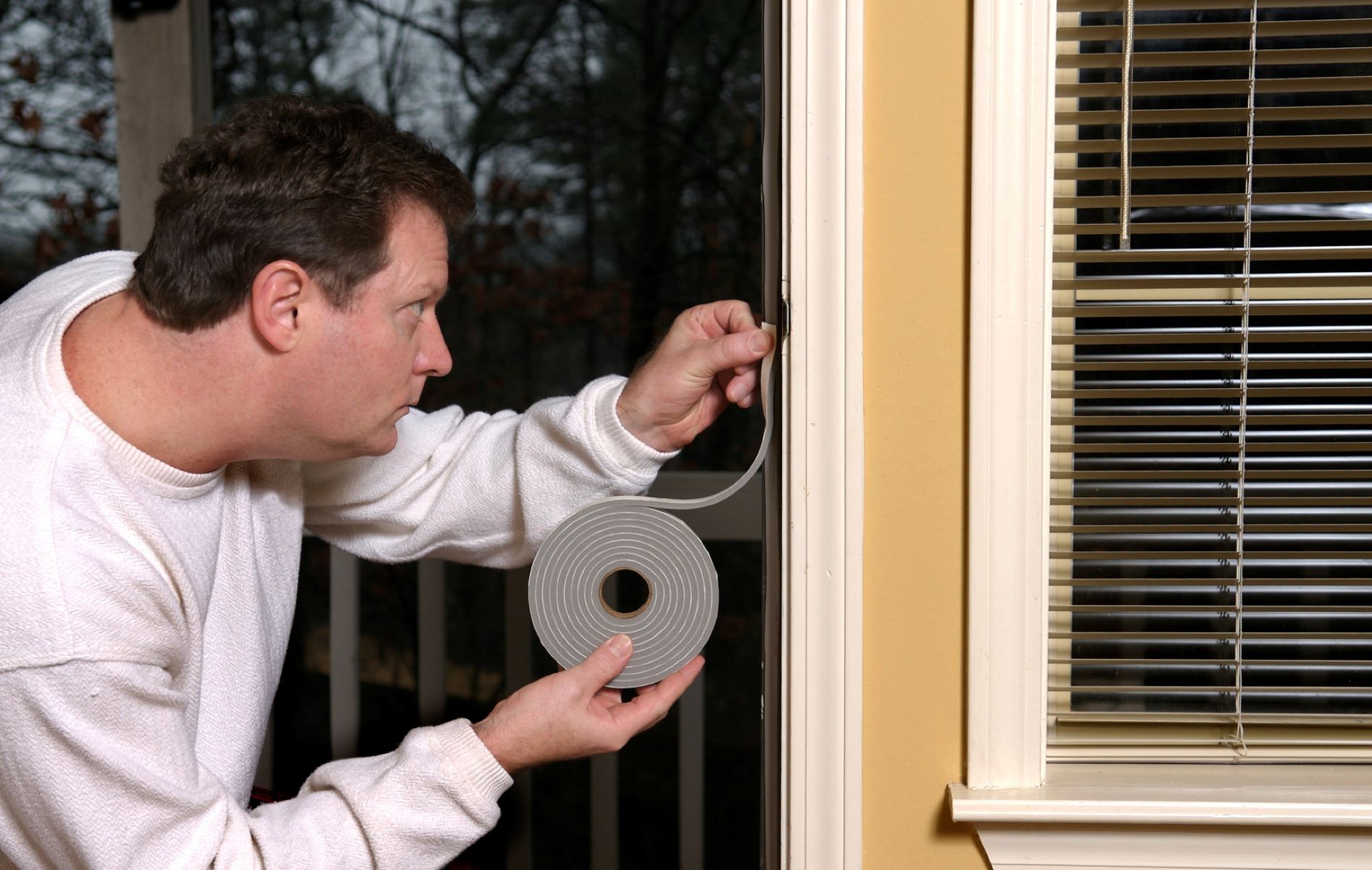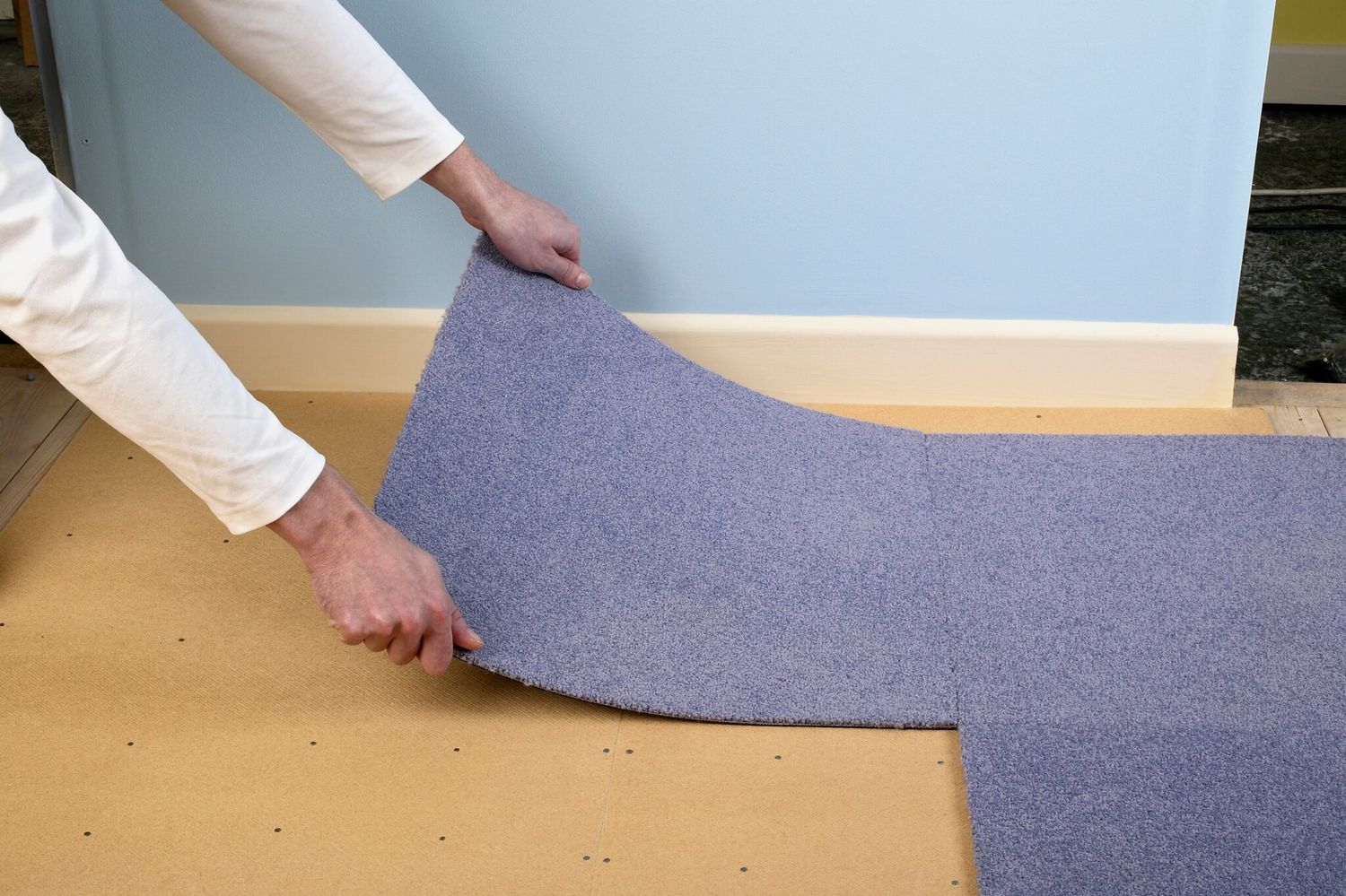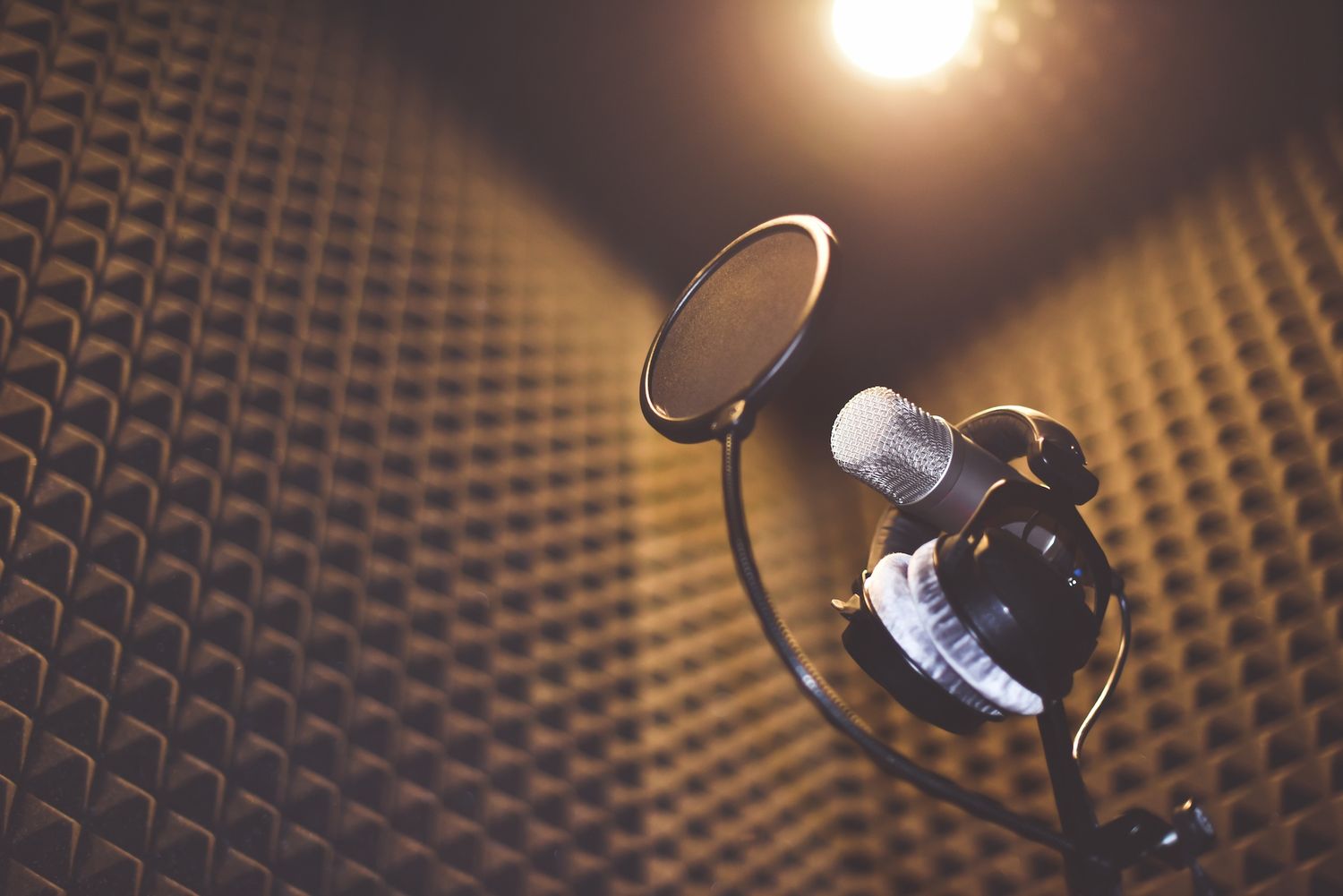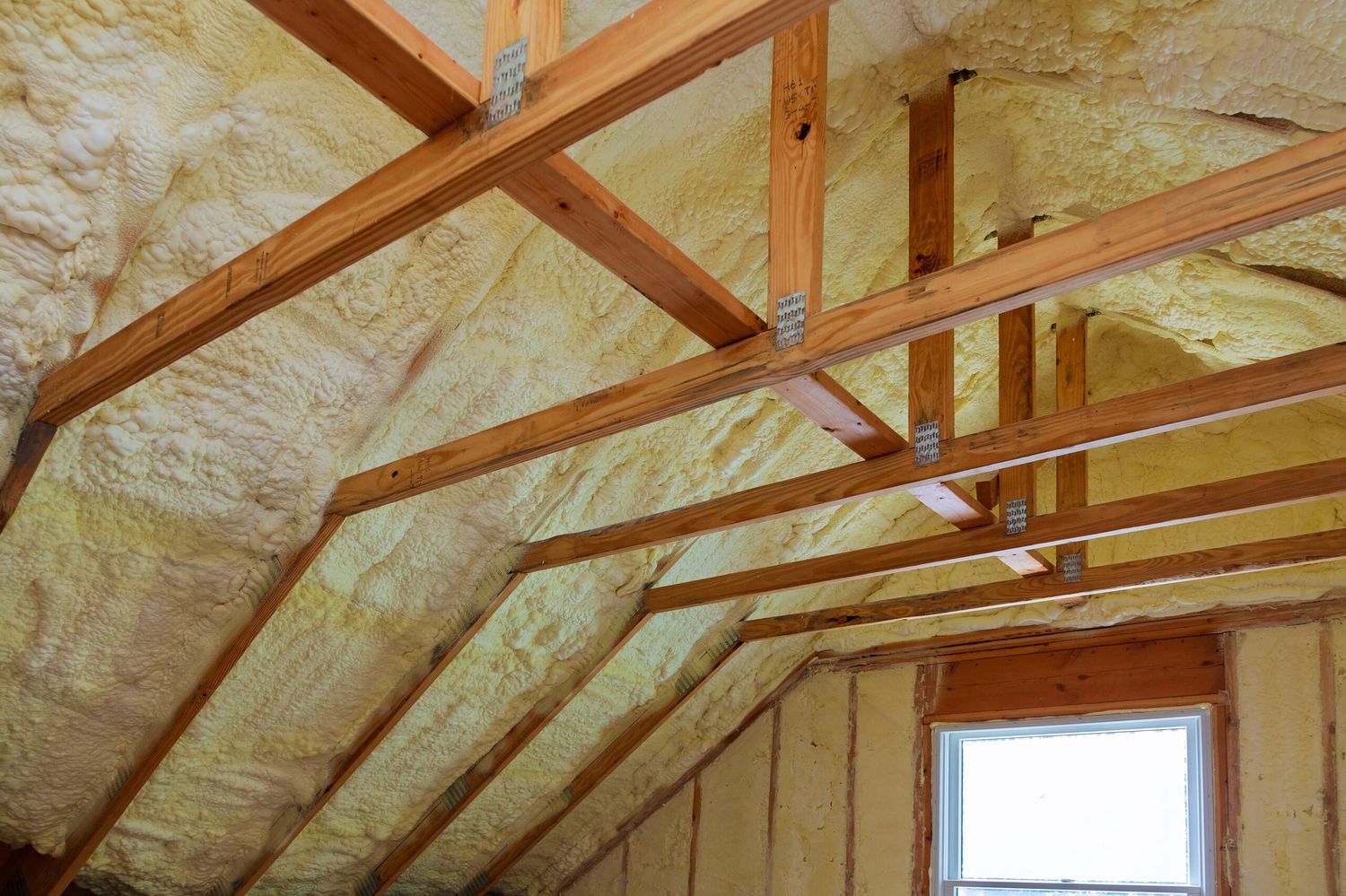Home>Production & Technology>Soundproofing>What Is The Best Soundproofing For A Band
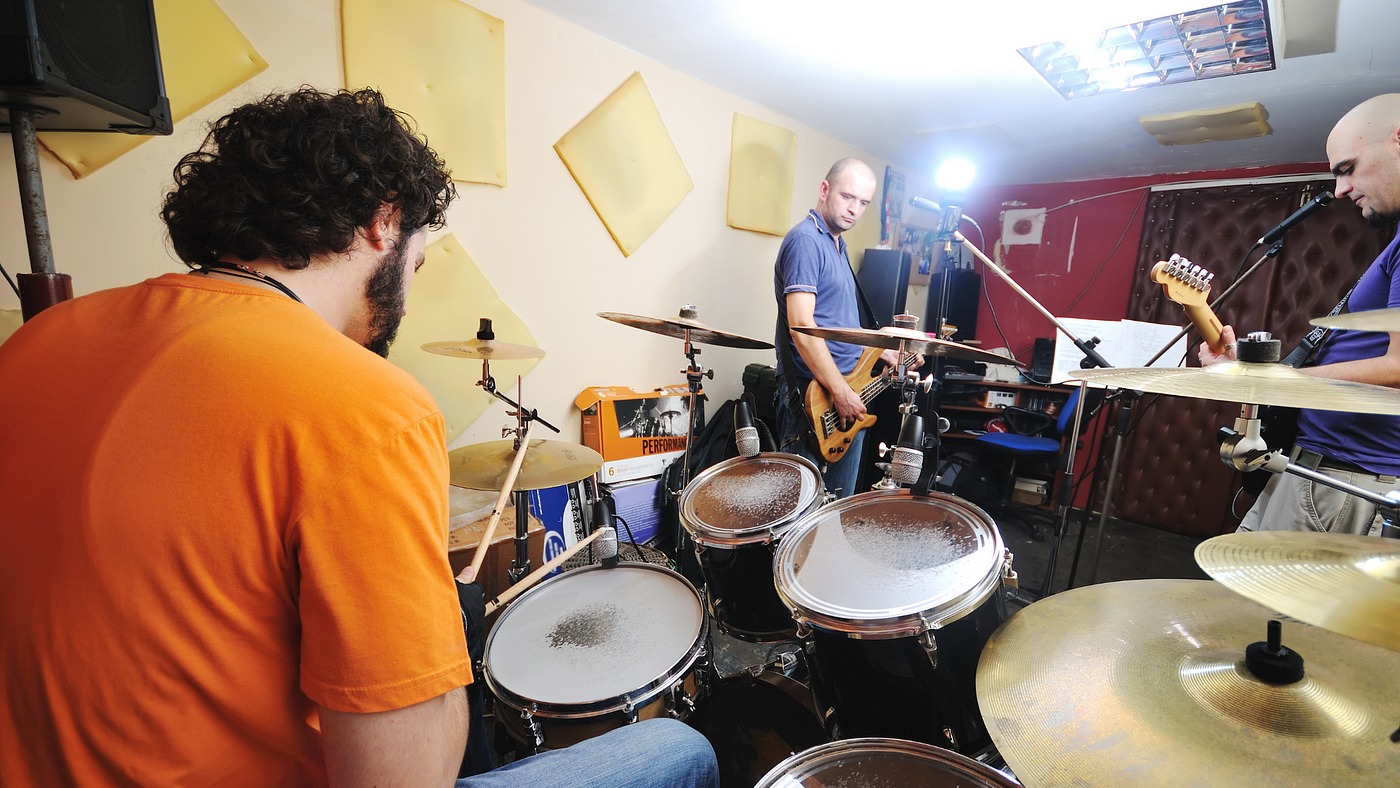

Soundproofing
What Is The Best Soundproofing For A Band
Modified: February 18, 2024
Find the best soundproofing solutions for your band to minimize noise and create a disturbance-free environment. Discover effective techniques and products for soundproofing your rehearsal space and enjoying uninterrupted music sessions.
(Many of the links in this article redirect to a specific reviewed product. Your purchase of these products through affiliate links helps to generate commission for AudioLover.com, at no extra cost. Learn more)
Table of Contents
Introduction
When it comes to creating music, sound quality is of utmost importance. A band’s ability to produce clear, crisp, and immersive sound can make or break their performance. However, in many cases, the surrounding environment can interfere with the band’s sound, causing distractions, echoes, and noise pollution. This is where soundproofing comes into play.
Soundproofing is the process of reducing or eliminating unwanted sound transmission between spaces. For bands, having a dedicated practice space or studio that is properly soundproofed is crucial for achieving optimal sound quality and creating a conducive environment for creativity and productivity.
Whether you’re a professional band looking to create the best music possible or a group of musicians who simply want to enjoy playing together without disturbing the neighbors, soundproofing is the solution you need.
But with so many soundproofing materials and techniques available, it can be overwhelming to know where to start. In this article, we will delve into the world of soundproofing for bands, exploring the importance of soundproofing, the factors to consider when choosing soundproofing materials, and the best soundproofing options available.
By the end of this article, you will have a thorough understanding of how to optimize your band’s practice space or studio for the best sound quality and minimal sound leakage.
Importance of Soundproofing for Bands
Soundproofing is not just a luxury for bands; it is a necessity. Whether you are practicing in a basement, garage, or dedicated studio, soundproofing is vital for several reasons:
- Preventing Noise Complaints: Without proper soundproofing, the sound of your band practicing can easily travel through walls and floors, leading to noise complaints from neighbors or even legal issues. Soundproofing ensures that you can play as loud as you want without causing disturbances.
- Improving Sound Quality: Soundproofing materials help in minimizing outside noise interference and echo, creating a controlled and optimal acoustic environment for your band. This allows for better recording sessions, rehearsals, and performances by reducing unwanted reverberations and ambient noise.
- Enhancing Privacy: As a band, you may want to create and experiment with new sounds without the fear of being overheard by others. Soundproofing your practice space provides the privacy you need to freely explore and develop your music without any distractions.
- Protecting Your Hearing: Constant exposure to loud music can have detrimental effects on your hearing. By soundproofing your practice space, you can reduce the risk of hearing damage for both yourself and your band members.
- Maximizing Creativity and Productivity: A well-isolated and soundproofed environment allows you to focus on your music without getting distracted by external noises. This promotes creativity, concentration, and overall productivity during rehearsals and studio recording sessions.
Investing in soundproofing materials and techniques is not just for the benefit of those in close proximity to your practice space. It ultimately improves the overall experience and quality of your music, allowing you to reach your full potential as a band.
Now that we understand the importance of soundproofing for bands, let’s explore the key factors to consider when choosing the right soundproofing materials.
Factors to Consider in Choosing Soundproofing Materials
Choosing the right soundproofing materials for your band’s practice space or studio is essential to achieve the desired level of sound isolation. Consider the following factors when selecting soundproofing materials:
- Soundproofing Goals: Determine the specific goals you want to achieve with soundproofing. Are you primarily focused on minimizing outside noise or reducing sound leakage to adjacent rooms? Understanding your goals will help you choose the most effective materials.
- Budget: Set a budget for your soundproofing project. Different materials vary in cost, so it’s important to consider affordability alongside performance.
- Space Limitations: Evaluate the size and layout of your practice space. Some materials require more space for installation, while others are suitable for smaller areas.
- Fire Safety: Check if the soundproofing materials you are considering are fire-resistant. Safety should always be a priority in any space.
- Aesthetics: Consider the visual appearance of the materials. You may want soundproofing solutions that blend seamlessly with your practice space or even add an aesthetic touch.
- Ease of Installation: Determine if you are comfortable with DIY installation or if you require professional help. Some soundproofing materials are easier to install than others.
- Longevity: Consider the durability and lifespan of the materials. You want soundproofing solutions that will last for years without deteriorating in effectiveness.
By carefully considering these factors, you can make an informed decision when choosing the soundproofing materials that best suit your band’s needs and budget.
Now let’s explore some of the best soundproofing materials available for bands.
Best Soundproofing Materials for a Band
When it comes to soundproofing your band’s practice space or studio, there are several reliable materials that can significantly reduce noise transmission and improve sound quality. Consider incorporating the following soundproofing materials into your space:
- Acoustic Panels: Acoustic panels are designed to absorb sound waves and reduce echo. They are versatile and can be easily mounted on walls or ceilings. These panels are available in various sizes, shapes, and designs, allowing you to customize the aesthetic of your practice space while enhancing sound quality.
- Mass Loaded Vinyl (MLV): MLV is a dense and flexible material that is highly effective in blocking sound transmission. It can be installed on walls, ceilings, and floors to create a barrier against noise. MLV is particularly useful in reducing low-frequency sounds, such as bass vibrations.
- Soundproof Curtains or Drapes: Soundproof curtains or drapes are made with multiple layers of thick, heavy-duty fabric that absorbs sound and blocks outside noise. They are easy to install and can be used to cover windows, doors, or any other opening in your practice space.
- Acoustic Foam: Acoustic foam panels are specifically designed to control and reduce mid to high-frequency sound reflections. They can be placed strategically on walls, ceilings, or even inside vocal booths and recording booths. Acoustic foam is an affordable and effective option for improving sound quality in smaller spaces.
- Green Glue: Green Glue is a damping compound that is applied between layers of drywall to reduce sound vibrations and improve soundproofing. It is an excellent option for adding an extra layer of soundproofing to existing walls without the need for major renovations.
- Soundproofing Paint: Soundproofing paint contains specialized compounds that help absorb sound waves, reduce echoes, and minimize noise transmission. It can be applied to walls, ceilings, and other surfaces, providing an additional layer of soundproofing without sacrificing aesthetics.
- Soundproofing Sealant: Soundproofing sealant is a flexible material that is applied around windows, doors, gaps, and cracks to prevent sound leakage. It is easy to use and provides an effective seal against noise infiltration.
Remember, the effectiveness of these soundproofing materials can be enhanced when used in combination. Consider the specific needs of your band’s practice space and select the materials that best address those needs.
When it comes to creating music, having a well-isolated and acoustically treated space is crucial. By incorporating these soundproofing materials, you can achieve optimal sound quality and create the best environment for your band to thrive.
Now, let’s conclude our exploration of soundproofing for bands.
Acoustic Panels
Acoustic panels are a popular and effective choice for soundproofing a band’s practice space or studio. These panels are designed to absorb sound waves, reduce echoes, and minimize reverberations, resulting in improved sound quality and clarity.
There are various types of acoustic panels available, including fabric-wrapped panels and foam panels. Fabric-wrapped panels consist of a dense core material covered with an acoustically transparent fabric. These panels not only provide excellent sound absorption but also add a visually appealing touch to the space. Foam panels are made from specialized acoustic foam that helps reduce mid to high-frequency sound reflections.
Acoustic panels can be easily mounted on walls or ceilings, and they come in various sizes, shapes, and designs. This versatility allows you to customize your practice space while effectively controlling sound reflections.
When installing acoustic panels, it’s important to strategically place them at reflection points, such as behind monitoring speakers, on the walls opposite the source of sound, and on the ceiling above the music performance area. This helps in minimizing unwanted echoes and reverberation, leading to a more controlled and balanced sound.
In addition to improving sound quality, acoustic panels also aid in creating a more comfortable and enjoyable environment for band members. They help reduce fatigue and strain on the ears by preventing excessive sound bouncing around the room. By minimizing sound reflections and echoes, band members can better hear themselves and each other, resulting in more focused and productive rehearsals.
When choosing acoustic panels, consider factors such as thickness, NRC (Noise Reduction Coefficient) rating, and the frequency range they are designed to absorb. Thicker panels generally offer better sound absorption performance, while higher NRC ratings indicate greater sound absorption across a wider frequency range.
Overall, acoustic panels are an excellent choice for soundproofing a band’s practice space. They not only improve sound quality and clarity but also enhance the overall experience for band members. By effectively controlling sound reflections, these panels create an acoustically pleasing environment where your band can fully unleash its musical creativity.
Mass Loaded Vinyl (MLV)
Mass Loaded Vinyl (MLV) is a versatile and highly effective soundproofing material commonly used in band practice spaces and studios. It is a dense and flexible material that is specifically designed to block sound transmission and reduce noise pollution.
MLV works by adding mass and density to walls, ceilings, or floors, creating a barrier that greatly diminishes the transmission of sound waves. Its effectiveness lies in its ability to absorb and disperse sound energy, particularly low-frequency sounds that can be challenging to control.
One of the advantages of MLV is its ease of installation. It can be easily cut and hung like a curtain, or it can be stapled, nailed, or glued directly onto surfaces. It can also be layered for added soundproofing performance.
When installing MLV, it is important to ensure complete coverage on surfaces and seal any gaps or seams to prevent sound leakage. This is key to achieving optimal soundproofing results. Additionally, MLV can be applied under floorings or within walls, providing exceptional sound insulation for band practice spaces.
Another notable benefit of MLV is its ability to dampen vibrations. This helps in reducing structural-borne sounds, such as footsteps or drum vibrations, from being transmitted through walls or floors. MLV acts as a barrier that absorbs and dissipates the energy of these vibrations, resulting in a quieter and more acoustically controlled space.
MLV is often used in combination with other soundproofing materials, such as acoustic panels or foam, to maximize soundproofing performance. Together, they can significantly reduce noise transmission, improve sound quality, and create a more conducive environment for band practices and recordings.
It is important to note that MLV is a dense and heavy material, so proper support is necessary when installing it on ceilings. Additionally, it is a good practice to ensure the MLV you choose is fire-rated and meets safety standards.
In summary, Mass Loaded Vinyl is a highly effective soundproofing material that provides excellent noise reduction and sound isolation properties. Its versatility and ease of installation make it a popular choice for bands looking to create a quieter and more controlled practice space. By incorporating MLV into your soundproofing strategy, you can enjoy improved acoustics, minimize sound leakage, and create an ideal environment for your band’s musical endeavors.
Soundproof Curtains or Drapes
Soundproof curtains or drapes are a practical and versatile solution for soundproofing a band’s practice space or studio. These curtains are specifically designed to block and absorb sound, effectively reducing noise transmission and improving overall acoustic control.
Soundproof curtains are usually made with multiple layers of thick, heavy-duty fabric that contains sound waves and prevents them from entering or leaving a room. The dense materials and their multiple layers help to enhance sound absorption, particularly for mid to high-frequency sounds.
One of the key advantages of soundproof curtains is their easy installation. They can be hung on existing curtain rods or tracks, and their portability allows for flexibility in adjusting and rearranging them as needed. This makes them a convenient option for those who may need to use their practice space for other purposes or frequently change their setup.
In addition to their sound absorption capabilities, soundproof curtains offer other benefits. They can reduce the amount of external noise pollution entering the practice space, creating a more peaceful and focused environment. Furthermore, they provide an added layer of privacy by preventing sound leakage and minimizing the chances of disturbing neighbors or other people in close proximity.
Soundproof curtains also have the advantage of being visually appealing and customizable. They are available in a wide range of colors, designs, and sizes, allowing you to choose the curtains that best suit your band’s aesthetic preferences and style.
While soundproof curtains can significantly reduce noise transmission, it is important to note that their effectiveness may not be as high as some other soundproofing materials. For maximum soundproofing performance, it may be beneficial to combine soundproof curtains with other materials, such as acoustic foam or panels.
Overall, soundproof curtains are a practical and effective soundproofing solution for bands. They offer an affordable and easy-to-install option for reducing noise transmission and creating a more controlled and private practice space. By incorporating soundproof curtains into your soundproofing strategy, you can enjoy improved acoustics and minimize disturbances, allowing your band to focus on creating the best music possible.
Acoustic Foam
Acoustic foam is a popular soundproofing material widely used in recording studios, practice spaces, and performance venues due to its effective sound absorption properties. It is designed to control and reduce mid to high-frequency sound reflections, helping to improve sound clarity and create a more acoustically balanced environment for bands.
Acoustic foam is made from specially engineered open-cell foam that is designed to trap sound waves and convert them into heat energy. This absorption process reduces sound reflections and prevents them from bouncing around the room, resulting in a clearer and more controlled sound.
One of the key benefits of acoustic foam is its versatility and ease of installation. The foam panels are lightweight and can be easily mounted on walls, ceilings, or any other surfaces in your practice space. They are available in various thicknesses and designs, allowing you to customize the level of sound absorption and create a visually appealing space.
When installing acoustic foam, it is important to strategically place the panels at reflection points and areas where sound energy is likely to build up. This includes areas behind speakers, on the walls opposite the source of sound, and on the ceiling above the main performance area. By strategically positioning the foam, you can effectively reduce unwanted echoes and reverb, resulting in a more controlled and accurate sound reproduction.
Acoustic foam is particularly beneficial in smaller practice spaces, as it helps to combat the issues of standing waves and flutter echoes. These acoustic issues can negatively impact the quality of sound, causing distortion or uneven frequency response. By incorporating acoustic foam, you can create a more even and balanced sound, allowing for better clarity and definition in your band’s music.
It’s important to note that while acoustic foam is effective in absorbing mid to high-frequency sound reflections, it may not be as effective in reducing low-frequency sounds, such as rumbling bass. For a more comprehensive soundproofing solution, combining acoustic foam with other materials like Mass Loaded Vinyl or soundproof curtains can yield optimal results.
Overall, acoustic foam is an affordable and efficient soundproofing material that can greatly improve the sound quality in a band’s practice space. By reducing sound reflections and controlling reverberations, acoustic foam helps to create a more balanced and controlled acoustic environment, allowing your band to fine-tune their sound and focus on creating exceptional music.
Green Glue
Green Glue is a specialized soundproofing compound that is commonly used to enhance the soundproofing performance of walls, ceilings, and floors. It is a viscoelastic material that works by converting sound energy into heat, effectively reducing the transfer of airborne noise and vibrations.
One of the key advantages of Green Glue is its versatility and ease of application. It comes in the form of a paste or a sealant and can be easily applied between layers of drywall, plywood, or other building materials. This makes it an ideal choice for both new construction projects and retrofitting existing spaces.
The application of Green Glue is typically done by sandwiching it between two sheets of material, creating a sound-damping barrier. As the Green Glue cures, it bonds with the surfaces and forms a resilient and flexible layer that effectively reduces noise transmission.
Green Glue is particularly effective in minimizing low-frequency sounds, such as bass vibrations, which can be challenging to address with other soundproofing methods. It acts as a damping material, absorbing and dissipating the energy of sound waves, preventing them from vibrating through the structure. This results in a significant reduction in the transfer of sound and vibrations between rooms or adjoining spaces.
In addition to its soundproofing capabilities, Green Glue also provides added benefits such as increased fire and moisture resistance. It helps to enhance the fire ratings of walls and ceilings, providing an additional layer of safety. Its moisture-resistant properties make it suitable for use in areas such as kitchens or bathrooms where humidity levels are higher.
When using Green Glue, it’s important to follow the manufacturer’s instructions and apply it correctly for optimal results. Good surface preparation and proper application techniques will ensure the most effective soundproofing performance.
It’s worth noting that Green Glue is mainly used in combination with other construction materials, such as drywall or plywood. To achieve maximum soundproofing results, it is often necessary to layer additional materials, such as mass loaded vinyl or acoustic insulation, along with Green Glue.
Overall, Green Glue is a reliable and effective soundproofing solution for bands looking to minimize noise leakage and enhance the acoustic performance of their practice space or studio. By using this sound-damping compound, you can significantly reduce the transfer of sound and vibrations, creating a more controlled and isolated environment to focus on your music.
Soundproofing Paint
Soundproofing paint is a specialized type of paint that contains sound-dampening properties, designed to reduce noise transmission and improve the acoustic performance of a band’s practice space or studio. While it may not provide as much soundproofing as other materials, soundproofing paint offers a convenient and cost-effective option for enhancing sound control in certain situations.
Soundproofing paints typically contain additives and compounds that help to absorb sound waves, reduce echoes, and minimize vibrations on walls, ceilings, or other surfaces. When applied, these paints create a thin layer that acts as a sound-dampening barrier, reducing sound reflections and preventing sound from travelling through the painted surface.
One of the advantages of soundproofing paint is its ease of application. It can be applied just like regular paint, using brushes, rollers, or spray equipment. This makes it a convenient option for DIY enthusiasts or for those who prefer a simple and hassle-free installation process.
It’s important to note that soundproofing paints are most effective when used on solid, non-porous surfaces such as drywall, plaster, or wood. They are less effective on surfaces with existing gaps or openings that allow sound to pass through.
While soundproofing paint can provide some level of noise reduction, it is important to manage expectations. It may not be as effective as other soundproofing materials such as mass loaded vinyl or acoustic panels. Soundproofing paint is best used as a supplementary measure in combination with other soundproofing techniques to achieve optimal results.
When considering soundproofing paint, it’s also worth noting that it can be applied in conjunction with regular paint. This allows you to customize the appearance of your practice space or studio while still benefiting from the sound-dampening properties.
Overall, soundproofing paint offers a convenient and easy-to-use option for enhancing sound control in a band’s practice space. While it may not provide the same level of soundproofing as some other materials, it can be a useful addition when used in conjunction with other soundproofing techniques. By incorporating soundproofing paint into your overall strategy, you can contribute to a more acoustically pleasing and controlled environment for your band’s rehearsals and performances.
Soundproofing Sealant
Soundproofing sealant is a versatile and effective solution for minimizing sound leakage and filling gaps or cracks in walls, windows, doors, and other surfaces of a band’s practice space or studio. It is specifically designed to create an airtight and sound-dampening seal, reducing the transmission of noise and vibrations.
Soundproofing sealants are usually made of a viscoelastic material that remains flexible after curing. This elasticity allows the sealant to effectively absorb sound waves and vibrations, preventing them from traveling through gaps or openings. It can be easily applied with a caulking gun or by hand, making it a convenient option for both small fixes and larger soundproofing projects.
One of the key benefits of soundproofing sealants is their ability to fill in and seal gaps and cracks, which are common culprits for sound leakage. By sealing these openings, the sealant helps to prevent sound from escaping or entering the practice space, resulting in improved sound isolation and control.
Soundproofing sealants can be used on a variety of surfaces, including drywall, wood, metal, and concrete. They are particularly useful for sealing gaps around windows and doors, as well as electrical outlets and ventilation openings. By addressing these vulnerable areas, you can significantly reduce sound transmission and ensure a more acoustically isolated environment.
In addition to its soundproofing properties, the sealant can also help in improving thermal insulation and reducing air drafts. This contributes to energy efficiency and enhances the overall comfort of the practice space.
It is important to select a high-quality soundproofing sealant that is specifically formulated for noise reduction. Look for sealants that have good sound transmission class (STC) ratings, indicating their effectiveness in reducing sound transmission. Additionally, ensure that the sealant is paintable if you plan to apply paint over it for aesthetics.
While soundproofing sealants are a valuable tool in soundproofing efforts, it is important to note that they are most effective when used in combination with other soundproofing techniques, such as insulation or mass loaded vinyl. This will provide a more comprehensive solution to minimize sound leakage.
In summary, soundproofing sealant is a practical and versatile option for filling gaps, cracks, and openings in a band’s practice space. By sealing these areas, you can effectively reduce sound leakage and improve sound isolation. When combined with other soundproofing methods, soundproofing sealant contributes to a more controlled and acoustically pleasing environment for your band’s rehearsals and performances.
Conclusion
Soundproofing is an essential aspect of creating a conducive and high-quality practice environment for bands. By investing in soundproofing materials and techniques, bands can significantly reduce noise transmission, improve sound clarity, and create a more controlled and enjoyable space for rehearsals, recordings, and performances.
In this article, we discussed the importance of soundproofing for bands, highlighting its role in preventing noise complaints, enhancing sound quality, providing privacy, protecting hearing, and maximizing creativity. We also explored the factors to consider when choosing soundproofing materials, such as soundproofing goals, budget, space limitations, fire safety, aesthetics, ease of installation, and longevity.
We then delved into some of the best soundproofing materials available for bands, including acoustic panels, mass loaded vinyl (MLV), soundproof curtains or drapes, acoustic foam, Green Glue, soundproofing paint, and soundproofing sealant. Each of these materials offers unique benefits and can be used in combination for optimal soundproofing performance.
Acoustic panels provide sound absorption and control, MLV acts as a barrier against sound transmission, soundproof curtains or drapes block outside noise, acoustic foam reduces mid to high-frequency sound reflections, Green Glue damps vibrations, soundproofing paint adds an extra layer of sound absorption, and soundproofing sealant fills gaps and cracks to prevent sound leakage.
It is important to note that soundproofing measures are often most effective when used in combination, as each material addresses different aspects of sound control and transmission. By incorporating a strategic mix of soundproofing materials that align with your specific needs and budget, you can create an environment that minimizes sound leakage and creates optimal acoustics.
In conclusion, soundproofing is a vital investment for bands seeking to create the best music possible while minimizing noise disturbances. By utilizing the right soundproofing materials and techniques, bands can enjoy improved sound quality, increased privacy, and enhanced creativity in a controlled acoustic environment. Take the time to evaluate your soundproofing needs and explore the different options available to transform your band’s practice space into a sanctuary for musical expression.

